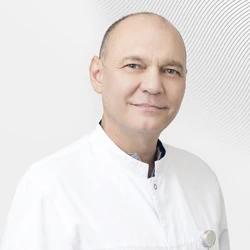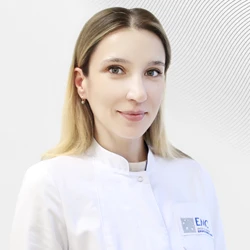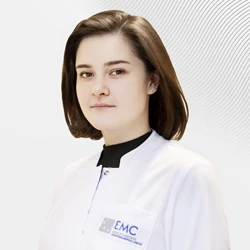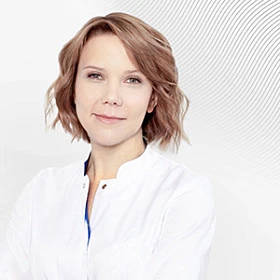Impetigo - symptoms and treatment methods in EMC
Superficial vesicular-pustular rashes form on the skin. The disease begins with the appearance of painful red spots, which then turn into blisters. After the bubbles burst, wet surface ulcers appear, later they are covered with honey-colored crusts. Most often, rashes are localized around the mouth and nose, in places where the skin is damaged.
Superficial vesicular-pustular rashes form on the skin. The disease begins with the appearance of painful red spots, which then turn into blisters. After the bubbles burst, wet surface ulcers appear, later they are covered with honey-colored crusts. Most often, rashes are localized around the mouth and nose, in places where the skin is damaged.
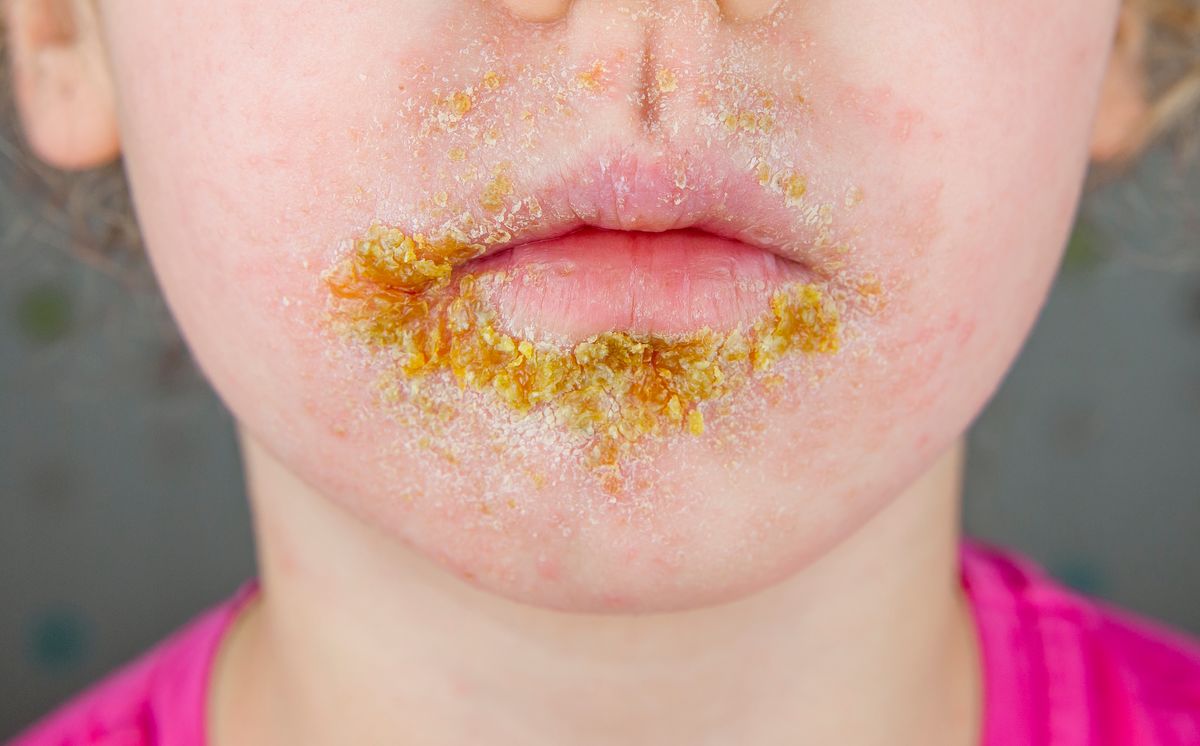
Impetigo is very easily transmitted from one person to another through household contact.
Staphylococci and streptococci can be constantly present in the body of a healthy person on the skin, on the mucous membranes of the mouth, nasopharynx, genitals, etc. They are in the air of poorly ventilated dark rooms. With a high threshold of body resistance and strong immunity, these bacteria do not cause skin pathologies. However, when conditions are favorable, they cause purulent skin lesions such as impetigo.
Favorable conditions for the development of impetigo:
-
poor skin hygiene
-
work in dusty or humid areas
-
excessive sweating, micro-injuries of the skin;
-
the presence of scratches on the skin;
-
decreased overall immunity;
-
decreased local immunity and impaired protective properties of the skin.
People who are in close contact with impetigo patients have the highest risk of infection.: for children in preschool institutions, schools, and work groups.
What the skin is made of:
-
The outer layer, the epidermis, protects the skin from the negative effects of external factors. The epidermis contains melanocytes responsible for skin color.
-
The middle layer, the dermis, is responsible for the elasticity of the skin. There are hair follicles, the beginnings of sebaceous and sweat glands, microvessels that feed the outer layer
-
The lower layer, the hypodermis– is subcutaneous adipose tissue involved in heat exchange and accumulation of nutrient medium for the dermis.
The mechanism of development of impetigo and many other diseases of the skin and appendages is very similar.
In the place where the hair root is located, there is a small hole through which a small amount of infection can enter the skin. The infection can also enter the skin through cuts, scratches, and abrasions. If the immune system is not weakened, the infection will not be able to spread. The exceptions are highly pathogenic infections, as well as situations where the skin is simultaneously affected by a large number of pathogenic microflora.
If the immune system is weakened, the infection, after penetrating the skin, begins to actively multiply, using the nutrient medium of the dermis. As they multiply, various skin diseases begin to appear.
Wherever the integrity of the skin is compromised or injured, there is a risk of skin diseases, including impetigo.
Classification of impetigo
There are several types of impetigo, each of which has several forms of course and differs from other types in its clinical picture.
Streptococcal (contagious) impetigo
It is the most common type, and women and children are more often infected with it.
Forms of streptococcal impetigo:
-
Simple – it is manifested by pink spots and peeling of the skin.
-
Annular – characterized by the fusion of purulent vesicles and the formation of large blisters, at the same time the process spreads along the periphery, forming a ring
-
Bullous is the most dangerous form of the disease. It occurs in most cases on the hands and feet in the form of purulent formations. The formations increase in size, open up, and crusts form in their place. Body temperature may rise.
-
Slit–like impetigo (congestion) - occurs more often in people who sleep with their mouths slightly open, or in those who have a habit of licking or biting their lips. The bacteria contained in saliva contribute to the development of the disease
-
Sudden (vegetative) impetigo. Spontaneous occurrence and spread of the disease. This form is characterized by the presence of bursting blisters with the formation of erosions covered with purulent crusts.
-
Syphil–like impetigo - appears more often in infants and is localized in the buttocks. Pimples open up, forming crusts, and there are no scars at the site of the rash.
-
Intertriginous streptoderma is characterized by purulent rashes in the folds of the skin. It often occurs in overweight people.
-
Impetigo of the mucous membranes – occurs on the oral mucosa.
Staphylococcal impetigo
Occurs most often in men, teenagers, and children. Staphylococci penetrate through wounds and cracks into the skin and cause infection. The reason is non–compliance with personal hygiene rules.
Types of staphylococcal impetigo
-
Bullous. The cause is Staphylococcus aureus. Purulent pimples, 0.5 cm in size, form around the hair follicles.
-
Not bullous. The cause is Staphylococcus aureus. It is characterized by white purulent rashes.
A mixed (vulgar) form of impetigo
It usually occurs as a complication of streptococcal impetigo and is accompanied by itching. It represents numerous purulent rashes localized on the face and neck.
Symptoms of impetigo
The main distinguishing feature of the disease is flictens. This is an element of the rash in the form of blisters filled with cloudy contents and surrounded by a corolla of skin hyperemia. They are more often multiple, located separately or grouped.
It is important to understand that the symptoms of impetigo can not only cause discomfort (itching, dryness, pain), but also spread to large areas of the skin, penetrate into the deep layers of the epidermis and reach the lymph and blood flow, disrupting the general state of human health.
Causes of impetigo
Impetigo occurs due to infection with streptococci and staphylococci. Infection occurs through the skin and mucous membranes.
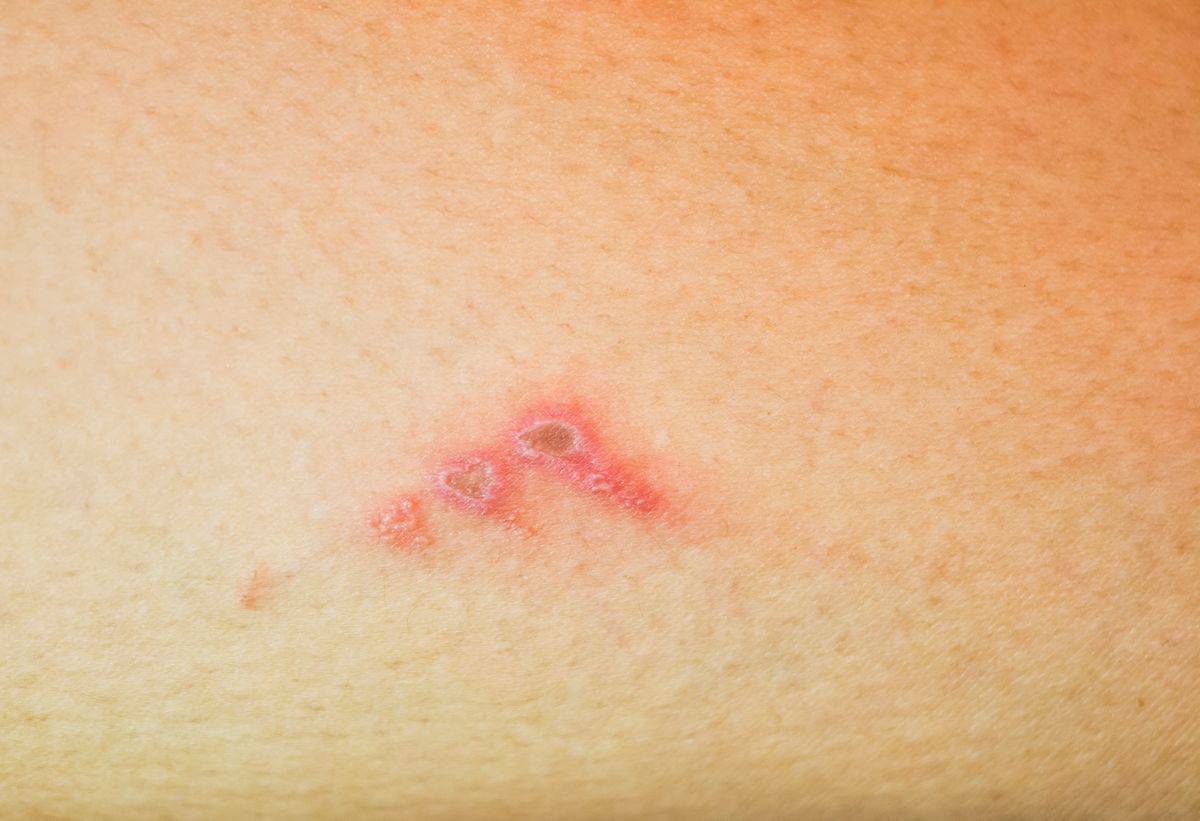
They increase the risk of developing the disease:
-
microtrauma (abrasions, scratches, bites, etc.);
-
untimely wound treatment;
-
skin maceration;
-
non-compliance with personal hygiene rules;
-
tactile contact with the carrier of infection;
-
common household items;
-
anemia;
-
reduced immunity;
-
high humidity climate;
-
diabetes mellitus, atherosclerosis.
To prevent impetigo infection, it is important to treat skin damage and injury with disinfectants in a timely manner.
Impetigo risk groups
-
climatic conditions: high humidity and air temperature;
-
reduction of the body's protective barrier, including during pregnancy, in the presence of concomitant somatic pathologies;
-
the presence of skin diseases accompanied by itching (chickenpox, eczema, pediculosis, etc.);
-
impaired metabolism;
-
violation of the integrity of the skin (abrasions, scratches, cuts, microcracks, erosions);
-
people with increased sweating.
Features of impetigo in children
Impetigo most often occurs in children due to poor hygiene. Bacteria enter through microtrauma into the upper layer of the epidermis and begin to multiply. The most common form is streptococcal impetigo.
In children under 1.5 – 2 years of age, the rashes are small in size, filled with a clear liquid, which after a while becomes cloudy. The bubbles burst, forming crusts that fall off after a few days. Pinkish spots appear on the site of the rash, which gradually disappear.
Infection occurs through contact with a sick child, and the disease is rapidly transmitted from child to child within a kindergarten group or classroom at school. Therefore, it is important to isolate the patient at the first symptoms that appear in the corners of the mouth, on the wings of the nose, behind the ears. If left untreated, the disease spreads throughout the body.
Properly prescribed treatment and compliance with all recommendations make it possible to cure the disease within a week. Complications are extremely rare.
Diagnosis of impetigo
Diagnosis is carried out by a doctor in consultation based on patient complaints, detailed medical history, physical examination and laboratory data.
Complaints:
-
skin rashes
-
rarely pain, itching
Medical history:
-
when did the first symptoms appear
-
cause of infection
-
features of the course of the skin process
Physical examination
General status:
-
examination of skin and visible mucous membranes;
-
assessment of peripheral lymph nodes;
-
palpation.
Local status:
-
the nature of the skin lesion;
-
localization of rashes;
-
rash elements (flare-ups, erosions, crusts);
-
getting wet.
Differential diagnosis
To prescribe accurate and effective therapy, it is important to differentiate impetigo from other diseases with similar symptoms.
Herpes simplex. It is characterized by grouped bubbles with transparent and then cloudy contents against the background of swelling and redness of the skin. When the bubbles open, erosions with polycyclic edges form in their place, accompanied by itching and burning. The main localization is the lips and the genital area. The herpes virus is diagnosed using PCR diagnostics.
Dyshidrosis. Rashes on the palms and feet in the form of dense bubbles with transparent contents, exist for a long time, appear simultaneously, unlike impetigo, they are not transmitted by household contact.
Candidiasis of the nail rollers. It is characterized by swelling and hyperemia of the nail rollers. Pus does not stand out from under the nail roller, the nail plate becomes brownish-brown in color. The diagnostic criterion is the presence of yeast–like fungi.
Treatment of impetigo
Successful treatment of the disease requires an integrated approach. If all the conditions and recommendations of the doctor are met, recovery occurs in a short time and without complications.
-
Rational nutrition. Preference for protein-based, easily digestible foods, vegetables and fruits, exclusion of spicy dishes, citrus fruits, spicy seasonings and canned foods from the diet.
-
Taking multivitamins.
-
Proper skin care and treatment of the affected areas according to the prescriptions of the attending physician.
-
Local therapy (for all types of impetigo).
-
Antibacterial therapy.
Local therapy
-
antiseptic drugs;
-
external antibacterial agents;
-
external antibacterial agents combined with topical glucocorticosteroids.
Antibacterial therapy
It is performed with widespread or recurrent impetigo, or with insufficient effectiveness of external therapy, as well as in case of complications.
The drugs, dosages and duration of administration are determined by a dermatologist, depending on the results of seeding the contents of the flycten on the microflora and its sensitivity to antibiotics. When selecting the drug, the patient's age, general health and the nature of complications are taken into account.
Complications of impetigo
Complications are rare. With timely and proper treatment, the disease disappears without a trace. Complications include aesthetic defects such as erosions, which leave behind small scars on the skin or areas of hypo- and hyperpigmentation.
The most dangerous complications of impetigo are nephritis and myocarditis. In some cases, phlegmons and abscesses develop.
Prevention of impetigo
To avoid re-infection, it is important to know and follow basic preventive measures. Skin contamination is one of the main factors that increase the risk of infection. Therefore, compliance with the rules of personal and occupational hygiene is the main preventive measure. It is also important to strengthen the immune system, lead an active lifestyle, eat right, and maintain a balance of vitamins and minerals in the body.
Precautions
Bacteria are easily transmitted by touch, therefore, during the active stage of the disease (until the crusts begin to dry out), a person must be isolated.
Carefully monitor the affected areas and evaluate the effects of therapy to prevent progression.
Strictly follow all the recommendations of the attending physician. Do not skip follow-up visits and do not cancel medications when the first signs of improvement appear.
Consult a doctor immediately if your condition worsens.
You can make an appointment with EMC dermatologists by calling +7 (495) 933 6655 or by filling out the form on the website.
Why the EMC
The first and only clinic in Russia, created in the image of the world's leading clinics
EMC is a multidisciplinary center offering patients a high level of medical services and a personalized approach
Worldwide recognition and awards
 Learn more
Learn more
Worldwide recognition and awards
 Certificates and licenses
Certificates and licenses
Make an appointment for a consultation
Specify your contacts and we will contact you to clarify the details
Reviews
and new products of the EMC
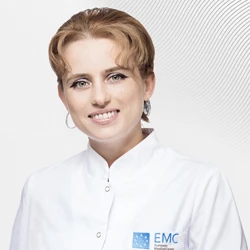
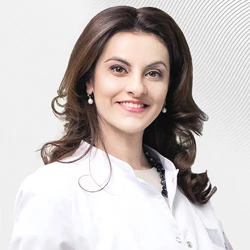
.webp)
.webp)
.webp)
